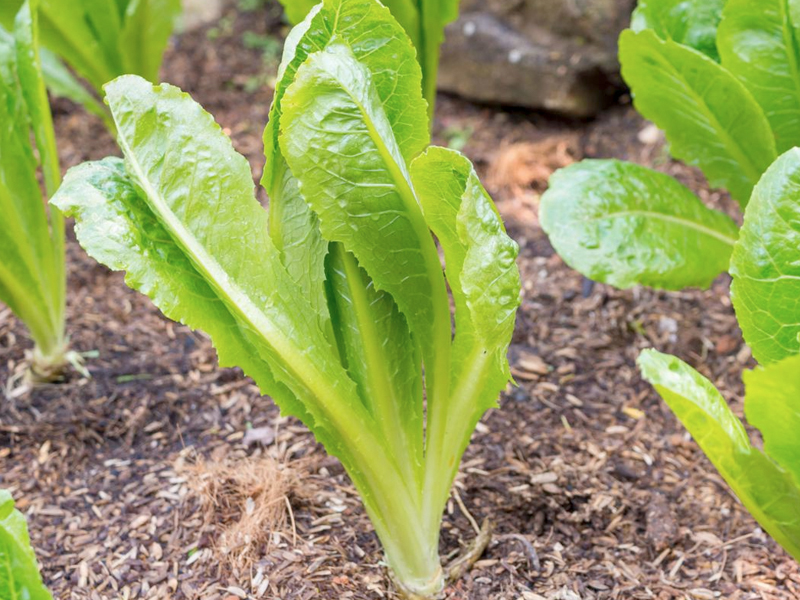Because the month of March meant the end of winter and armies were able to attack again, the Romans named the month after the god of war, Mars. March 1889 is when the Eiffel Tower officially opened to the public; in 1876 Alexander Graham Bell made the very first phone call, and March 1886 is when Coca-Cola was created. It is the birthday month of Albert Einstein, Justin Bieber, Vincent Van Gogh, Daniel Craig and Bruce Willis.
And March is time to plant cold-weather crops like peas, radishes and lettuce. One very good lettuce to plant is Romaine lettuce, so named because it was introduced to the west from Rome. Unlike most lettuces, Romaine (Lactuca sativa L. var. longifolia) can tolerate heat, so it is slow to get bitter or bolt to seed when the days turn hot.
We tend to think of lettuce as mostly water, but the dark-green leaves of Romaine lettuce are loaded with antioxidants that are thought to help prevent cancer.
This Mediterranean native forms tall heads of thick, crunchy leaves with a solid rib down the center of each one. Romaine lettuce, also known as Cos lettuce, is well loved for the hearts at the center of each head. The outer leaves are great in salads, used in place of tortillas for sandwich wraps, and are durable enough for cooking on the grill.
Sow Romaine lettuce seeds as early as the ground can be worked in the spring. You can also start Romaine seedlings indoors to transplant later.
Dig in compost while working the soil, so the plants have plenty of food to grow rapidly. Lettuce tolerates a wide variety of soil types, but grows best with a pH between 6.2 and 6.8. Because Romaine lettuce grows well in a little bit of shade, it makes a great companion plant to taller crops like tomatoes.
Choose a spot with full sun or light shade. For a continuous crop, plant seeds every two weeks so you have a constant supply of Romaine over the summer and fall. Sow the tiny seeds in rows 12 inches apart. Cover the seeds very lightly, just a quarter-inch of fine soil. Sprinkle the seedbed with a fine mist of water, and keep it moist but not soggy. In seven to 10 days the seeds will sprout. When the plants are an inch or two tall, thin them out so they are eight inches apart.
Keep Romaine lettuce well watered, especially during dry spells. This leads to rapid, uninterrupted growth and sweeter lettuce. Because lettuce roots grow close to the surface, avoid disturbing the soil around the plants when weeding or hoeing. To keep weeds down and retain soil moisture, you can apply a light mulch.
Lettuce grows best under moist, cool conditions, and can even survive light frost. You can pick just the young, outer layers of leaves and leave the Romaine plant itself to continue growing. For baby greens it is easier to simply cut the plant down, leaving a few inches of stem so it can regrow.
So fear not the Ides of March; just march out to the garden and plant Romaine lettuce, and in a few weeks you will have fresh, dark-green crunchy leaves for Caesar salads, sandwiches and grilled greens. Plant now and dream of long-ago Marches when the Eiffel Tower opened and the first phone call was made, and perhaps try not to think of when Justin Beiber was born.




















































